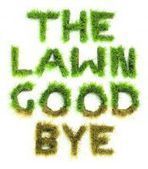 Your new post is loading...
 Your new post is loading...

|
Scooped by
PIRatE Lab
|
There are about 16,000 golf courses in the United States, and they all need huge amounts of water. The sport must take notice of limited resources and develop courses that are more in harmony with the environment.

|
Scooped by
PIRatE Lab
|
When someone says that there are two Californias, the reference these days is usually to the political differences between coastal and inland residents rather than the historical split between north and south.But there is a third and even more...
|

|
Scooped by
PIRatE Lab
|
With California facing its worst drought and water agencies throughout the state asking residents to cut back home water use, "it's the right thing to do," says Johnson, an avid fly fisherman who's attuned to water issues. With more and more competing demands for a limited water supply and tighter restrictions likely, maintaining a water-guzzling lawn is looking like the equivalent of driving a Hummer. The statewide figure covers a lot of variation; Charles Bohlig, East Bay Municipal Utility District water conservation supervisor, notes that although its customers use an average of 40 percent of their household water on lawns and gardens, house lots are larger and lawn irrigation use higher on the dry side of the East Bay hills. Lawn fertilizers give off nitrous oxide - a greenhouse gas 300 times more potent than carbon dioxide. John Greenlee, Brisbane landscape designer and author of "The American Meadow Garden" and an advocate of low-water landscaping, has been through big droughts in the '70s and '80s and believes this drought has brought California to a tipping point. What accounts for its tenacious cultural hold? "There's almost a visceral reaction to grass, the way it's soft and springy underfoot," says Brenzel. East Coast transplantThe East, where summer rains make lawns viable, was where influential 19th century landscape architects such as Frank Jessup Scott made the lawn a marker of prosperity and respectability and a key element of civic beautification. [...] in recent years, there's been a shift in attitudes toward lawns, says Kathy Kramer, founder and organizer of the East Bay's Bringing Back the Natives Garden Tour (see box), which for the past 10 years has spotlighted homes with mostly native, drought-tolerant plantings. People who are interested in saving money on their water bill, eliminating pesticide use, and enjoying nature right outside their home are moving toward this newer and, I think, more interesting, type of garden. Other options people are trying: ornamental plants from other Mediterranean climate zones, succulents, even "edible lawns" of heritage grains. The East Bay Municipal Utility District, which has asked its customers to cut home water use by 10 percent, recently green-lighted homeowner Michael Johnson's project as part of its conversion rebate program (see box). At a "Mow No Mo" workshop hosted by Johnson in March, participants will smother his turf under layers of pomace compost - the residue from grape pressing - cardboard and wood-chip mulch.
|
 Your new post is loading...
Your new post is loading...
 Your new post is loading...
Your new post is loading...












Water, water, everywhere...or at least for Golf Courses.
Here are some more California-centric and more recent numbers:
http://www.dailynews.com/general-news/20140404/how-southern-california-golf-courses-are-managing-water-use-during-a-drought
http://www2.gcsaa.org/gcm/2005/oct/pdfs/green_67-72_oct.pdf
The latter suggests that for SoCal courses we are using something like 350,000 or so gallons per day, but the stated restrictions suggest golf courses are using something like 20% less water in recent months owing to the scarcity of water. This would put such courses at something like 280,000 gallons per day.